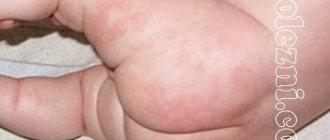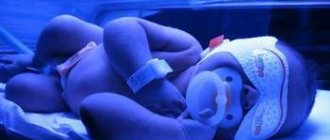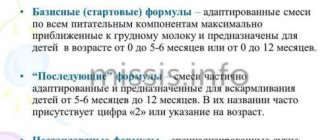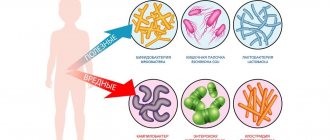What is stridor in newborns
Represents obstruction of the respiratory tract. It has another name - stridor breathing in newborns. In the first days of life it is expressed by noisy breaths. The breathing process is accompanied by whistling, and sometimes the sounds resemble the crow of a rooster. The clinical picture can be observed constantly or intensify at moments of excitement of the baby.
According to experts, stridor should not be called a disease. This is a special condition of the larynx, which is characterized by certain symptoms. In some cases, they indicate that the child has a serious illness. In children, it most often occurs before one year of age.
The phenomenon may disappear on its own, without taking medications. Stridor noise is heard during inhalation and exhalation. The intensity and volume of characteristic sounds differ. A particularly strong manifestation is associated with overexcitement of the baby.
In some cases, whistling and heavy breathing appear when the child cries or raises his voice. As a rule, infants suffer from wheezing around the clock. At night, during complete rest, clinical manifestations gain momentum, significantly worsening. Despite the whistling sounds and hissing, the children sleep peacefully.
Pathology occurs in children due to the characteristics of the body. The cartilage that is in the larynx is soft and has not yet formed properly. They are often compared to plasticine, especially if the baby has a disorder of this kind. When you inhale, the cartilages close against the background of negative pressure that occurs in the bronchi. As a result, the air begins to vibrate, creating so-called stridor sounds.
Causes of congenital stridor
7 out of 10 infants suffer from stridor, which causes defective development of the respiratory system. In this case, the weakness of the glottis or its narrow structure are distinguished. Whistling sounds appear after surgical treatment. Stridor can develop against the background of serious illnesses.
Most often, natural underdevelopment of the larynx is identified.
Stridorous breathing, or respiratory tract obstruction syndrome, often results from neurological problems. The appearance of stridor may be associated with disorders of muscle tone in children. Tonic tension leads to clamping of the muscles of the larynx and, as a result, the appearance of a characteristic noise effect. This phenomenon is often observed among children whose bodies tend to have increased neuro-reflex excitability.
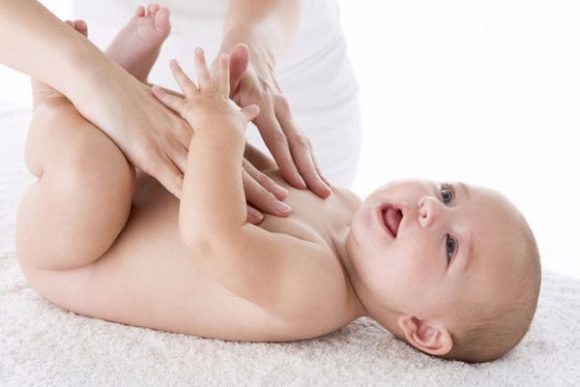
Congenital stridor treatment methods
It should be noted that the method of treating a newborn will directly depend on the exact stage of the disease and the reasons that provoked the appearance of the deviation.
If the child has grade 1 or 2 of the disease and has a satisfactory general condition, stridor does not require any special treatment. All that is required is to wait a little until the baby’s respiratory tissues are fully formed. In this nature, the child should be systematically observed by a specialist until the child outgrows the pathology.
In other situations, depending on the severity of the pathological process and the form of the disease, the specialist prescribes drug therapy and refers the baby to surgery to correct the abnormalities.
Drug treatment
Depending on the child’s condition, he may be prescribed medications from the following groups.
- Drugs are prescribed to reduce spasms: for example, Salbutamol or Eufilin.
- Anti-edematous treatment is carried out using drugs such as Furasemide, Sorbitol, Reogluman or Mannitol.
- In some cases, treatment with hormonal medications may be required: Hydrocortisone, Dexamethasone or Prednisolone.
- Daily inhalations may be necessary to help widen the baby's airways.
- A course of treatment is carried out with injections of vitamin B and Novocaine.
- Humoral immunomodulators are prescribed. These include monoclonal antibodies and interferons.
Surgical intervention
The method of surgical treatment of stridor is selected taking into account the cause that provoked the development of the deviation.
- If the baby has a deviation such as a hemangioma in the larynx, then to eliminate the problem it is sufficient to perform an operation to remove it using a carbon dioxide laser.
- If the baby is in critical condition, accompanied by severe attacks of suffocation, he is intubated, thanks to which artificial ventilation of the lungs occurs.
- When a child has vocal cord paralysis, he undergoes a tracheotomy. This operation is also indicated for other respiratory abnormalities that do not go away on their own even over time.
- If stridor breathing is caused by a disease such as laryngeal papillomatosis, then the disease can be cured by performing an operation to remove papillomas using special surgical micro-instruments. Well, in order to prevent stridor from bothering the baby again, after surgery, interferon-type drugs are prescribed as a preventive measure.
The essence of the surgical intervention is a small dissection of the laryngeal folds or epiglottis, or partial removal of the laryngeal cartilages.
It should be noted that there are no preventive measures to prevent stridor, since this pathology is congenital.
Stages of the pathological process
The degree of respiratory impairment may vary. Based on this, compensated, borderline-compensated, decompensated and critical stages of pathology are distinguished.
Compensated
It is a mild form of the disease. As a rule, it does not cause severe inconvenience to small patients. Signs of stridor are rare and do not require serious medical treatment. Over time, the symptoms go away and the baby begins to breathe freely.
Border-compensated
It is diagnosed if stridor is observed for a long time. Practically no different from the compensated stage. It is recommended to have regular check-ups with your doctor. This will help, if necessary, begin treatment and prevent complications.
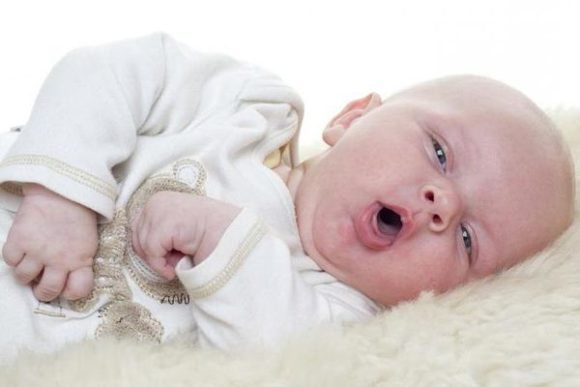
Decompensated
Breathing is very heavy, whistling and noise are heard, and the baby behaves restlessly. After examination by your doctor, you may need drug therapy. In this case, the condition of the body is constantly monitored by a doctor. Often there is a need for surgical intervention.
See also
Can a wisdom tooth cause a sore throat and what should I do?
Read
Critical
This degree of stridor is characterized by severe respiratory distress. At this stage, surgical intervention is mandatory. This is the only method that will relieve the symptoms of stridor. If resuscitation measures have not been carried out, there is a risk of death.
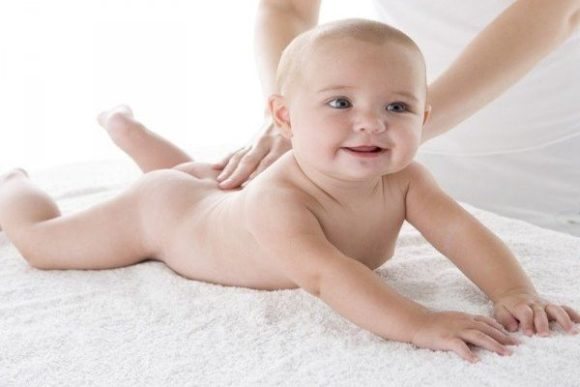
Classification
Stridor of the larynx, as mentioned earlier, can be congenital and acquired, and also has four degrees of course:
- compensated – minor deviations are observed that do not require therapy;
- borderline-compensated - the child is under constant supervision, treatment is rarely prescribed;
- decompensated – significant deviations are observed that require appropriate therapy;
- severe degree - in most cases it poses a danger to the patient and requires immediate help and surgical intervention.
Congenital stridor has three types:
- expiratory stridor – develops during exhalation, when its patency below the vocal cords is impaired, while the pitch of the sound is average;
- inspiratory stridor – formed during inspiration, in this case the disturbances are localized above the vocal cords, the noise has a low frequency;
- biphasic stridor - obstruction is observed at the level of the vocal folds; this type is characterized by high and noisy breathing.
Along with congenital stridor, the child may experience a number of various abnormalities that can aggravate the general condition of the baby.
Forms of stridor
In addition to the degree of the disease, stridor has 3 forms. There are pathologies of inspiratory, expiratory and biphasic types.
Inspiratory
The first form is characterized by inhalation. People around you hear low-pitched noise. This phenomenon is the result of damage to the vocal cords. The location is in the upper part of the larynx or in the laryngopharynx area.
Expiratory
It is the complete opposite of the inspiratory phase. Develops during exhalation. The sound is average. The sounds are heard much louder, which greatly worries the baby. In this case, there is obstruction below the vocal folds.
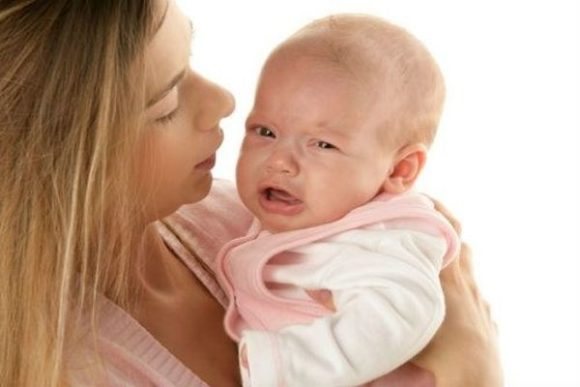
Two-phase
Biphasic stridor is characterized by a syndrome of airway obstruction, which is located at the level of the vocal folds. The baby is breathing heavily, the sound is high-pitched. It is the most severe degree of the three existing ones. The development of stridor affects the quality of life.
Development of the disease
Any of the pathologies described above lead to obstruction of the airways, due to which air masses must overcome resistance in order to enter the lungs. The passage of air through narrowed areas of the respiratory tract leads to the appearance of characteristic sound effects - noise, whistling or hissing.
Depending on the severity of the respiratory disorder, the following degrees of congenital stridor are distinguished:
- first degree – compensated. With it, the pathology does not require any treatment;
- the second degree is borderline compensated. When it develops, dynamic regular monitoring of the patient by an otolaryngologist and pulmonologist is required; treatment is not always prescribed;
- third degree – decompensated. From the moment of its development, the described pathology requires treatment;
- fourth degree - with it, critical breathing disorders develop, which may be incompatible with life - because of this, immediate resuscitation measures and emergency correction through surgical intervention are required.
According to the mechanism of development of disorders due to which breathing suffers, three types of congenital stridor have been identified:
- inspiratory;
- expiratory;
- two-phase.
Inspiratory stridor develops during inspiration. It occurs with pathological changes that are localized above the vocal cords - most often in the area of the hypopharynx or the upper parts of the larynx. The resulting breathing noise is low-pitched.
Congenital stridor of the expiratory type develops during exhalation. The reason for its formation is obstruction (obstruction) that occurs below the vocal cords. The stridor sound that occurs in this case is characterized by an average pitch.
With biphasic stridor, airway obstruction develops at the level of the vocal folds. This results in high-pitched noisy breathing.
It should be borne in mind that children with congenital stridor may also simultaneously experience:

gastroesophageal reflux - reflux of stomach contents through the lower esophageal sphincter into the lumen of the esophagus;- Achalasia cardia is a chronic neuromuscular pathology in which, at the moment of swallowing, there is no reflex opening of the cardia, the opening on the border between the esophagus and the stomach;
- sleep apnea - involuntary stops in breathing that occur during night sleep;
- Eyelid ptosis is a drooping of the upper eyelid, which can be a congenital defect or develop from neuromuscular lesions of the eyelid.
In some cases, with congenital stridor, other congenital diseases develop - most often these are:
- hydrocephalic syndrome - excessive production of cerebrospinal fluid (CSF) in the ventricles of the brain, which manifests itself in a child as decreased muscle tone, deterioration in swallowing and grasping, and in some cases - convulsions;
- heart defects – congenital or acquired disorders of the anatomical elements of the heart, due to which the blood flow is disrupted;
- pulmonary hypertension - progressive increase in pressure in the pulmonary artery
and some others.
Of all the defects that accompany congenital stridor, the most commonly diagnosed are:
- open oval window - non-closure of a temporary hole in the septum between the atria, which is normally observed in the fetus at the time of its intrauterine development;
- accessory chord of the ventricle - an additional connective tissue cord, which is attached at one end to the valve leaflet and at the other to the wall of the heart.
Symptoms and signs of the disease
The main sign indicating the development of the disease is noisy breathing. It can be different: resemble a whistle, hissing, a cock's trill or a cat's purr. Symptoms may vary depending on the patient's condition and the phase in which the disease is located. Initially, the pathology does not cause much inconvenience, but over time, the quality of life deteriorates, which significantly affects the baby.
With the onset of stridor, the child is cheerful and never refuses food. Sleep is also ok. The development of symptoms leads to voice disorders. The timbre of the voice changes, its strength is insufficient. The throat is sore and a lump is felt.

Stridor breathing can be intense when certain conditions occur. For example, when a baby cries, his breathing changes. The same is observed when changing body position. The baby is trying to roll over to the other side in order to somehow reduce the manifestation of stridor.
The course of the pathology intensifies against the background of viral infections and other diseases. Stridor is always accompanied by swelling of the mucous membranes and difficulty breathing. In this case, shortness of breath and blue discoloration of the skin may occur. Stridor can lead to the development of laryngospasm. The most difficult thing is the retraction of soft tissues into the intercostal space and the onset of acute respiratory failure.
If congenital stridor is not complicated by other diseases, its symptoms gradually weaken. Every month the baby’s condition improves, and by the age of 3 the family completely forgets about the pathology.
Diagnostic methods
Detailed information from the patient's medical history plays an important role in establishing a diagnosis. The slightest information will help you avoid many problems and affect the speed of recovery. These include the duration of stridor, at what point it began, and how it manifests itself. Do parents notice the baby's noisy breathing during feeding?
Each baby’s body is different, so it is possible that symptoms may intensify at a time of calm. The examination should include an assessment of the child's physical condition.
The simplest diagnosis includes measuring pulse, blood pressure, respiratory rate and skin tone on the face, neck and chest. A general blood test is required.
As for instrumental diagnostics, its list includes various studies. Each of the methods deserves special attention:
- Endoscope. The procedure is carried out using a special device. It is a long hose with high flexibility. At the end there is a camera and lighting. Using an endoscope, the bronchi, larynx, esophagus, and stomach are examined. At the time of the procedure, take into account the fact that some parts of the organs may differ from the usual structure.
- X-ray. For a complete and accurate examination of stridor, it is important to have both direct and lateral views of the larynx. The second is considered the most informative. Allows you to carefully examine the soft tissue and structure of cartilage during stridor.
- CT. The so-called computed tomography. Gives an accurate picture by which you can determine the state of the human body. At the same time, shadow overlays of the spine are excluded. Thanks to the ability to assess tissue density, a specialist can distinguish papillomas from scars that are located on the larynx. A CT scan is performed among patients with difficulty breathing.
See also
Symptoms and treatment of allergic tracheitis in a child
Read
Endoscopy is the most informative.
Forecast
The prognosis for stridor varies.
If all conditions are created for the normal growth and development of a child, then the phenomena of stridor will self-liquidate before the age of 2-3 years.
The prognosis is difficult in cases such as:
- the addition of a respiratory tract infection;
- formation of respiratory failure;
- state of decompensation.
Kovtonyuk Oksana Vladimirovna, medical observer, surgeon, consultant doctor
6, total, today
( 42 votes, average: 4.71 out of 5)
Ethmoiditis: symptoms and treatment
How to treat allergic rhinitis?
Related Posts
Treatment options
There are two ways to treat pathology - with medications and surgery. The first method is used extremely rarely, since in the initial stages of the disease the patient does not need it. Often, with stridor, surgical intervention is resorted to. The last method is used if the baby is in serious condition.
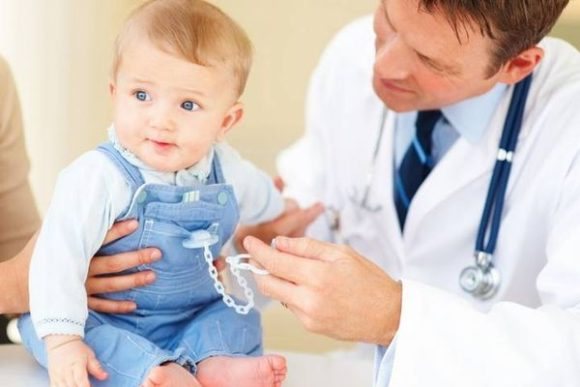
Drug treatment
There is no special treatment in the initial stages of the disease. All that needs to be done is to see a doctor regularly. Hospitalization is indicated if ARVI develops against the background of pathology. Treatment includes the use of bronchodilators and medications containing hormones. Inhalations are of great benefit.
Taking bronchodilators and hormones eliminates spasms. The child no longer feels pain and falls asleep easily at night. The drugs are not able to completely eliminate the symptoms of the disease. This is a way to ease the course of pathology.
Any medication should only be prescribed by a doctor.
Surgery
If the disease does not go away, and the symptoms worsen and threaten the patient’s life, surgical intervention is performed. During the operation, an incision is made in the laryngeal folds or the area that is located above the larynx. If necessary, resort to partial removal of the arytenoid cartilages. The operation for stridor is carried out carefully, trying not to damage the baby’s throat and not further aggravate the course of the disease.
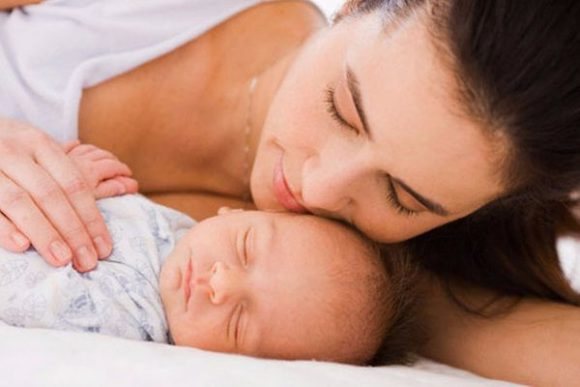
For subglottic narrowing of the larynx, therapy is carried out using a carbon dioxide laser, since this method removes tumors. Such treatment ends with the use of glucocorticosteroids, hormones or interferon. Vocal cord paralysis can only be cured by tracheotomy. The operation proceeds as follows: the trachea is incised and a device made of metal is inserted inside.
Treatment of stridor in children
The choice of treatment strategy directly depends on the cause that caused the pathology. It is impossible to determine the cause without the help of a specialist. Anamnesis and clinical examination are important for diagnosis. Pathology is identified and corrected by specialists such as ENT, neurologist, pediatrician, gastroenterologist and pulmonologist. Specialists analyze the frequency of heart contractions and breathing, the color of the child’s skin, the location of the muscles (during breathing) and the retraction of various parts of the chest during breathing. Doctors also check the patient’s physical and neuropsychic development.
The larynx is examined using microlaryngoscopy, laryngoscopy (with anesthesia), tracheobronchoscopy, chest X-ray and ultrasound are also used.
If medical supervision is not enough, and the symptoms of the pathology do not decrease by the child’s 6 months, and do not disappear completely by the age of 2, the doctor may prescribe bronchodilators, hormonal drugs, glucocorticosteroids and inhalations (if stridor appears due to infection). For tumors (benign in nature), interferon preparations are used.
We recommend: Komarovsky - how to treat a dry cough in a child
Medical procedures include laser incisions on the epiglottis, dissection of the folds between the epiglottis and the arytenoid cartilage, removal of part of the arytenoid cartilages, and removal of tumors (if any). In rare cases, hospitalization is necessary.
Possible complications and consequences
The development of stridor provokes a lot of other, no less dangerous, diseases. Among the ailments, inflammation of the trachea, laryngitis or pneumonia are common. If a viral flu occurs, decompensation of congenital stridor occurs with the development of respiratory failure. The most severe case is suffocation.
In rare cases, aphonia occurs. This phenomenon is characterized by the inability to speak in a full voice. The child begins to communicate exclusively in a whisper. If urgent measures are not taken, the baby may die due to lack of oxygen and the inability to breathe fully.
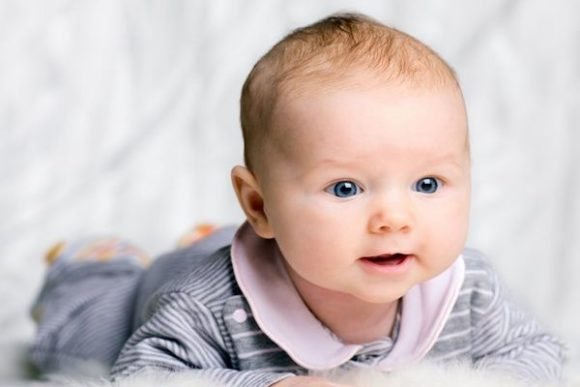
Prevention and prognosis for congenital disease
Congenital stridor in infants should not cause any particular concern in adults. This doesn't mean you should ignore the problem. Observations from a doctor will help you avoid worsening. If the situation is critical, they react quickly to save the life of the little patient.
The child's body is exposed to various environmental factors. Viral infections can complicate the course of stridor. Therefore, prevention of colds should be carried out. From a young age it is recommended to harden the body.
Both baby and mother are advised to have a balanced diet, including foods rich in all necessary substances. You should exclude unhealthy foods from your diet: spicy, fatty, salty, and reduce the amount of sweets you consume. Drink plenty of fluids.
In cold weather, wear warm clothes and avoid hypothermia. Overheating also has a negative effect on the body, so it is worth minimizing exposure to direct sunlight. The baby needs to be taken care of, as he is not able to take care of himself. Bad habits also need to be broken. The best prevention is a healthy lifestyle, adequate sleep, and eating the “right” food.
